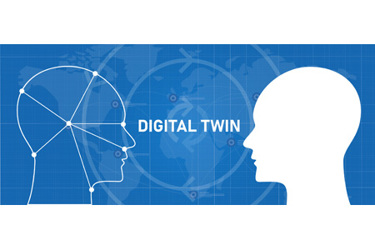SWAN Corner: When It Comes To Digital Twins, AI, And Advanced Algorithms, Don't Forget The Data!
By Tim Kruse

In the water and wastewater industry today, magazine articles, conference papers, and advertising featuring Big Data, artificial intelligence, and machine learning (AI/ML) are everywhere. While most organizations are still evaluating the various technologies and vendors, the real and achievable benefits are generally accepted.
Leaders in the AI/ML space come from all backgrounds — many from academia, some from industry verticals, and still others from within municipal utilities. Despite the many competing approaches, technologies, and platforms, one foundational requirement unites them all: they rely on a steady stream of reliable utility data from mostly on-premise systems.
The data required to feed digital twins and other advanced applications doesn’t come from a single system. Data sources include process control (SCADA), laboratory, maintenance, geospatial, weather, water quality, and logbook systems. While most utilities have complex network architectures, few have proper tools to consolidate, normalize, and transfer information to data-hungry third-party technology solutions. This data challenge disrupts project timelines and can compromise results.
Overcoming this data logistics problem is a challenge that cannot be overlooked. Unfortunately, many solutions do just that. Instead of building a connection between data and their analytics engines, precious technical resources are invested in perfecting model outputs and algorithm performance. This requires customers to build out their own data onboarding solutions, often using manual data extractions and manipulations. While this works in the short-term, it is not sustainable, resulting in short-term use of high-value analytics.
However, building, testing, and deploying a reliable data consolidation, normalization, and transfer methodology is challenging given the unique complexities of each client. The matrix of systems, network architectures, protocols, and data formats exponentially increase the number of possible combinations. As a solution, some larger organizations with adequate technical skills and resources build large, consolidated data repositories (i.e., data warehouses, data lakes, etc.). While this is effective, the resources and cost required prevent many organizations from adapting this approach.
As an alternative, using a solution like SUEZ Smart & Environmental Solutions’ (SES) eRIS consolidates the access point of enterprise data without physically relocating it. The eRIS Data Hub connects to enterprise systems and retrieves data on demand. Once connected, data is normalized and enhanced with validation or data cleansing algorithms to deliver a clean, reliable, and repeatable data stream for many uses including reporting, dashboarding, monitoring, and delivery to third-party cloud hosted applications.
Using eRIS as a reliable data transfer tool is not just an idea, but a proven strategy. eRIS and Pani Energy’s AI Coach™ worked together to deliver a robust prototype. eRIS fed data to two of Emagin AI’s projects in Ontario, Canada. eRIS is currently working with other SES solutions, Optimizer™ and AQUADVANCED®, to bridge the gap between on-premise client data and cloud tools.
With eRIS, clients and consultants can use simple browser-based tools to select, optimize, and schedule regular data transfers easily and efficiently from:
- Client SCADA historians like Aveva Wonderware, GE Proficy, Ignition, OSIsoft PI, and others.
- Laboratory data from industry solutions like SampleMaster, LABWORKS, StarLIMS, X-LIMS, and others.
- Asset and maintenance information from leading tools like Cityworks, INFOR EAM, Maximo, Lucity, and others.
- Manually entered data such as daily rounds and plant operational logbook entries.
Feeding online cloud systems is not its only use. Other clients find eRIS the perfect tool to share data privately and securely with other business partners. eRIS is used by several municipal wastewater systems to regularly share process data with an industry leading biosolids management firm. Parties leverage eRIS to transfer relevant data to a secure, online eRIS platform through a flexible, encrypted data tunnel. Once delivered to the cloud, each partner has read-only access to the other’s information within their local eRIS applications. Data is conveniently shared without ever exposing a partner’s network directly to another.
Municipalities are also using eRIS to easily collaborate on regional data repositories. In the greater Toronto area, the City of Toronto and the Regional Municipality of Durham have long worked together on regional data sharing. eRIS is now supporting the data delivery process by providing a powerful platform to select, schedule, and manage the delivery of data using several data-delivery protocols, including SFTP.
Our clients, including industry pioneers, startups, established vendors, and utility partners rely all on eRIS to provide a solution to their data-stream conundrum.
Tim Kruse is Vice President and General Manager at eRIS, a SUEZ SES North America company.
SWAN, the Smart Water Networks Forum (SWAN), is the leading global hub for the smart water sector. A UK-based non-profit, SWAN brings together leading international water utilities, solution providers, academics, investors, regulators, and other industry experts to accelerate the awareness and adoption of “smart,” data-driven solutions in water and wastewater networks worldwide. Learn more at www.swan-forum.com.
